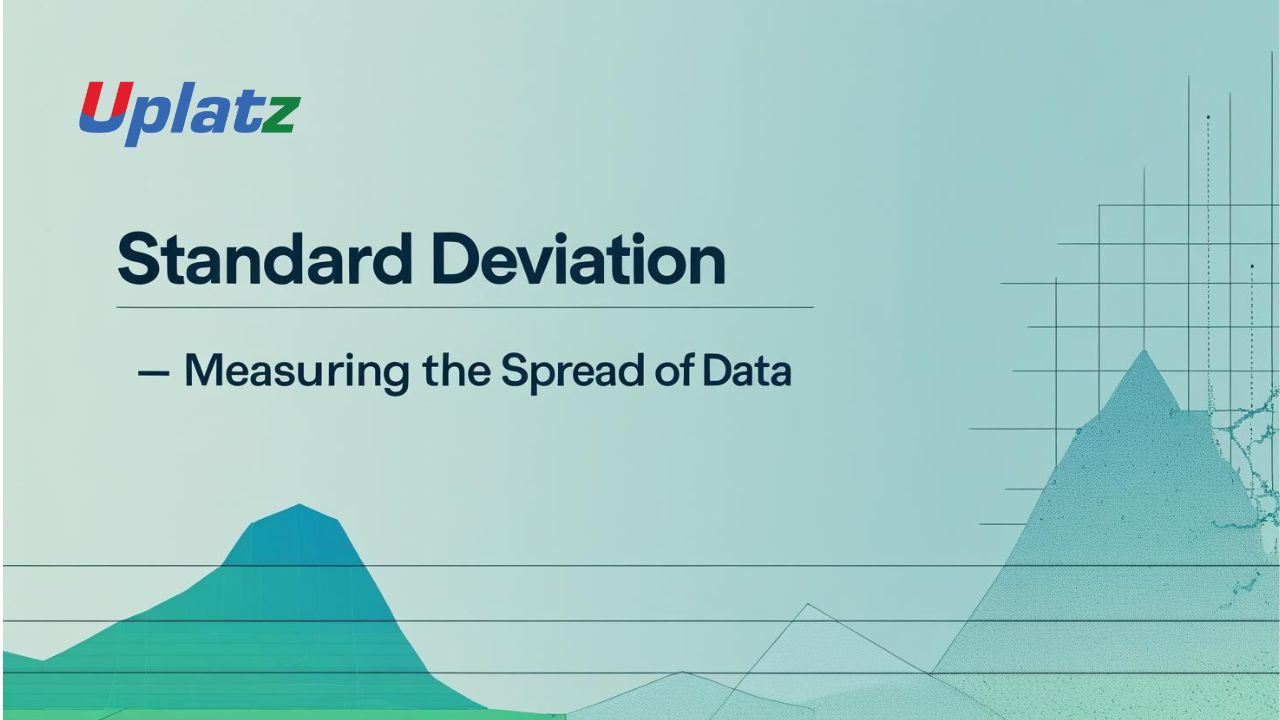 🔹 Short Description:
🔹 Short Description:
Standard deviation tells you how much the values in a dataset deviate from the mean. It is one of the most important measures of variability in statistics.
🔹 Description (Plain Text):
Standard deviation is a statistical metric that quantifies the amount of variation or dispersion in a dataset. While the mean gives us the central value, standard deviation shows us how spread out the values are around that mean. It helps answer the question: “Are the data points close together or widely scattered?”
If the standard deviation is small, it means that the values are tightly clustered around the mean. A large standard deviation indicates that the data points are more spread out and that there’s more variability in the dataset.
Formula (for population standard deviation):
σ = √[ Σ(xᵢ – μ)² / n ]
Where:
- σ = standard deviation
- xᵢ = each value in the dataset
- μ = mean of the dataset
- n = total number of values
Example:
Suppose you have these five scores: 8, 10, 10, 10, 14
- The mean (average) is 10
- Some values are exactly at the mean, while one (8) is slightly lower and another (14) is higher
- The standard deviation here would be relatively small, indicating low variability
Why Standard Deviation Matters:
Standard deviation is crucial in both descriptive and inferential statistics. It helps determine how reliable the mean is and whether the values are consistent. A low standard deviation in production quality, for example, shows that most items are produced consistently. In finance, it’s used to assess investment risk — a higher standard deviation suggests higher volatility.
Real-World Applications:
- Finance: Assessing the volatility of stocks and portfolios
- Education: Understanding the spread of student test scores
- Manufacturing: Measuring consistency in product dimensions
- Healthcare: Comparing variability in patient outcomes
- Sports: Analyzing performance fluctuations of athletes
- Machine Learning: Used in algorithms like normalization, z-scores, and loss functions
Key Insights:
- Standard deviation is always non-negative
- The greater the standard deviation, the more spread out the data
- It is often used along with the mean to fully describe a dataset
- In a normal distribution, about 68% of values fall within one standard deviation of the mean
Difference from Variance:
Standard deviation is the square root of variance. While variance gives a mathematical measure of variability, standard deviation is more interpretable since it’s in the same unit as the original data.
By learning how to calculate and interpret standard deviation, you gain a deeper understanding of data behavior — not just what the typical value is, but how much variation you can expect around it.
🔹 Meta Title:
Standard Deviation – Formula, Examples, and Why It Matters
🔹 Meta Description:
Understand standard deviation, a key measure of how spread out values are in a dataset. Learn how to calculate it, see how it differs from variance, and explore real-world use cases in finance, education, and machine learning. Includes formula, interpretation tips, and practical insights for analysis.
